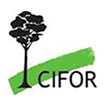Hypsiboas frog, Manu National Park, Peru.
Frogs eat untold billions of insects each year, making them economically valuable to agriculture. They also provide a critical food source for birds, fish, snakes, and other wildlife. But the most important contribution frogs make may be their role as environmental indicators. When pollution or other environmental changes affect a habitat, frogs are often the first casualties. These delicate creatures provide an early warning for endangered ecosystems.
Copyright policy:
We want you to share Forests News content, which is licensed under Creative Commons Attribution-NonCommercial-ShareAlike 4.0 International (CC BY-NC-SA 4.0). This means you are free to redistribute our material for non-commercial purposes. All we ask is that you give Forests News appropriate credit and link to the original Forests News content, indicate if changes were made, and distribute your contributions under the same Creative Commons license. You must notify Forests News if you repost, reprint or reuse our materials by contacting forestsnews@cifor-icraf.org.
We want you to share Forests News content, which is licensed under Creative Commons Attribution-NonCommercial-ShareAlike 4.0 International (CC BY-NC-SA 4.0). This means you are free to redistribute our material for non-commercial purposes. All we ask is that you give Forests News appropriate credit and link to the original Forests News content, indicate if changes were made, and distribute your contributions under the same Creative Commons license. You must notify Forests News if you repost, reprint or reuse our materials by contacting forestsnews@cifor-icraf.org.





